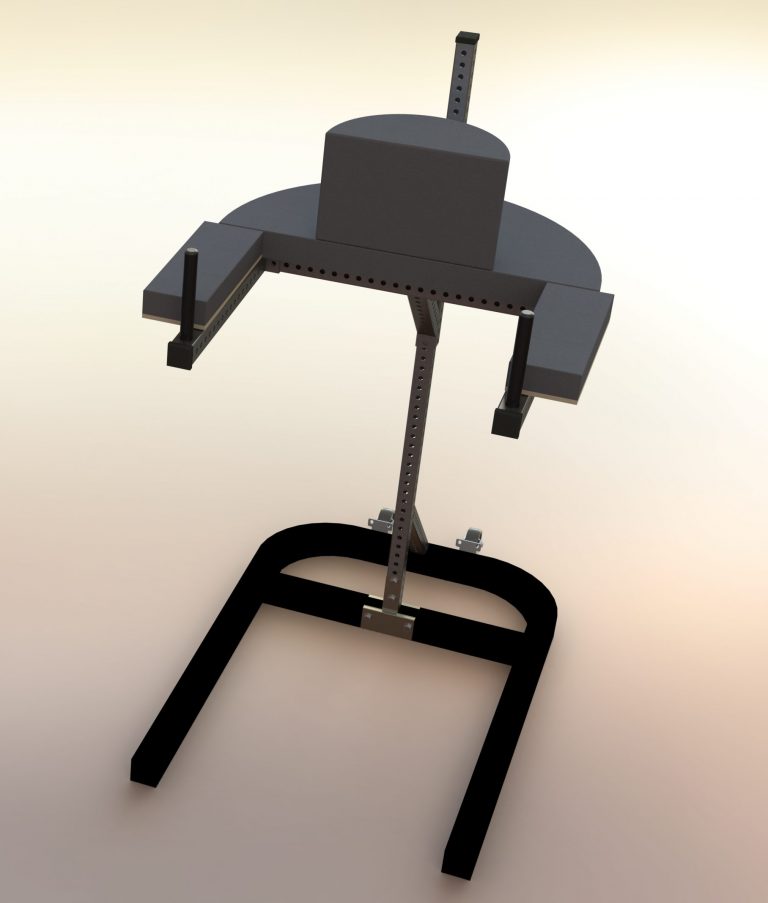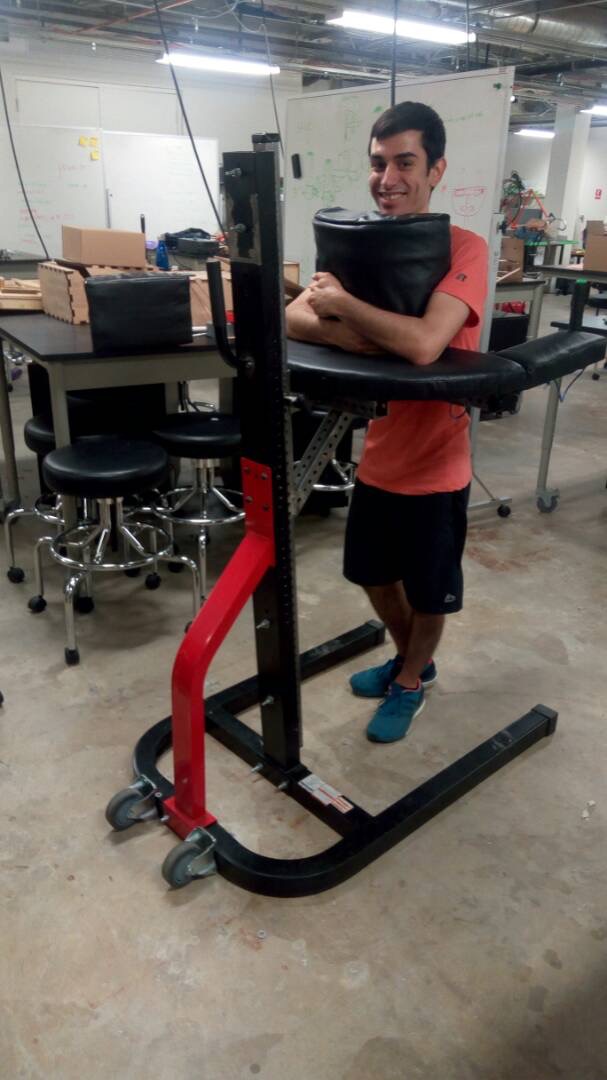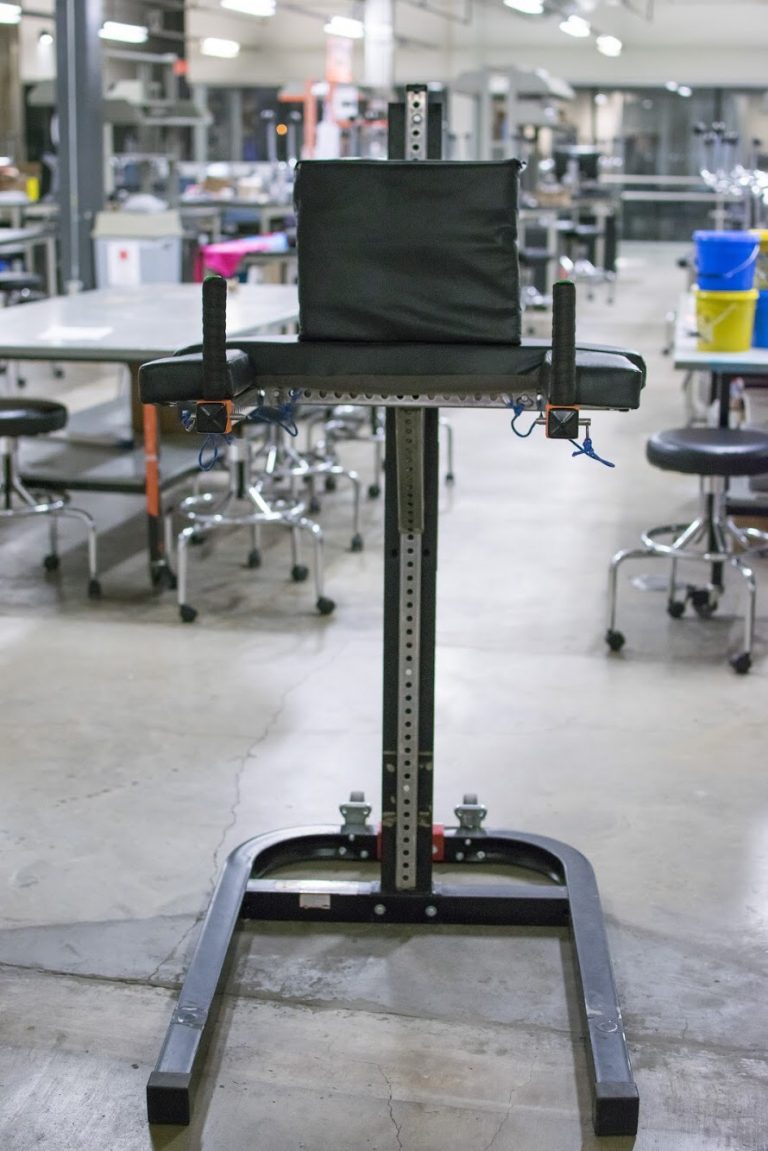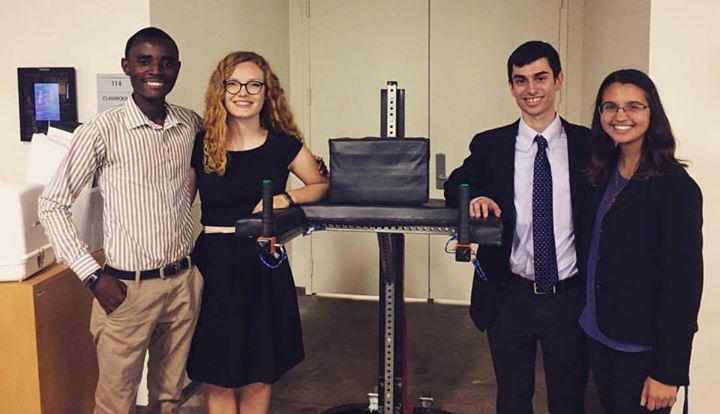Wow, we have already reached week seven. SEED is coming to an end! It’s amazing how fast this whole experience has been. Team Gotta Cast ‘Em All made a strong finish in completing our casting stand, and we are nearly ready to deliver it to our client at Hanger Clinic.
I ended my last blog after we had finished welding the frame of the casting stand together. When we came back to work on Friday, our team tested the design’s stability and seriously considered all of its issues. From our testing, it was clear that the device was too unstable to be used by our client. Applying only a minimal force caused the entire device to shake and rotate. This wobble was caused by the movement and rotation of the telescoping square tubes due to the gaps between the inner and outer tubes. As a result of having many telescoping components, the amplification of all of the wobbles made the device unstable. Additionally, one of our design choices was to put the front vertical supports on dolly wheels as opposed to casters, which were placed on the back support. Thus, because the dolly wheels do not lock, the device was difficult to adjust in height because the wheels would move forward and cause the front vertical supports to tilt. The maximum width between the inside of the armrests was roughly 17 inches, which is not wide enough for a majority of adults. In a book on human body measurements, we learned that to accommodate the 99th percentile adults, the width between the armrest needed to be at least 23 inches wide. Therefore, while our device was able to function in supporting the weight of a person, there were important issues that had to be addressed in a redesign.
In the discussion of our casting stand redesign, we considered how to make height adjustment easier to use, how to accommodate larger adult sizes, and how to increase the structural stability. The first improvements we thought to incorporated involved making minor fixes to the existing prototype we created, such as increasing the size of the caster wheel base, trimming the armrest brackets to enlarge the maximum armrest width, and designing a method to lock the dolly wheels. After listening to feedback and suggestions provided by Dr. Wettergreen and Dr. Hunter, we realized that more drastic changes needed to be made to ensure the device’s stability. They recommended incorporating the large steel U-shaped base from the previous ENGI 120 casting stand team. This base was adapted from an exercise machine, so it has already been manufactured remain sturdy while supporting the weight of a person. Our team was initially hesitate to incorporate too many of the components from the previous ENGI 120 team’s prototype, as it would significantly alter our design and could decrease the functionality and usability.
On Monday, our team determined how to move forward with our redesign based on the discussions from Friday. We decided to remove the two vertical armrest supports from our device and attach the back vertical support to the U-shaped base using a steel bracket. To proceed, we began plasma cutting the steel brackets, grinding down the welds on the prototype to remove unnecessary connections, and redesigning the CAD model.
The next day was our last full day of prototyping before our final presentation on Wednesday, and we still had many tasks to complete before our device would be ready. After attaching the steel brackets to the base and vertical support, we learned that the bracket we designed was not going provide the stability we wanted. The weakest element on the bracket was the 90 degree bend, which could easily be bent out of place when force was applied. After another discussion with Dr. Wettergreen and Dr. Hunter about these stability issues, we ultimately realized the need to incorporate more of the previous team’s prototype. Our solution was to not only use the U-shaped base but also the vertical rectangular steel pole to mount our device. This meant that our vertical tube would be bolted to the other vertical pole and spaced with washers so that the vertical bracket for the frame could still slide. This design seemed like our best option for moving forward, and it turned out to not be too difficult to put together. After drilling a few more holes and finding the right bolts and nuts, we mount our frame onto the exercise machine base. This improvement drastically increased the stability and solved many of our issues. Once Liz finished sewing the cushions, we added them to the frame, and our device was nearly complete. On Wednesday, we made minor fixes to the device to adjust the design and were ready to present it.
I am very happy how well how our final presentation went and am very appreciative of my team’s strong effort. We worked hard on producing a deliverable project to Hanger Clinic, and I believe we have succeeded in our goals for the summer. Although we experienced many challenges, we were able to work through these obstacles. We hope to be able to deliver the device to Hanger Clinic next fall once school starts.






Congratulations to your team. Harrell and I enjoyed getting to know you and following your progress in person and on your well-written blog.